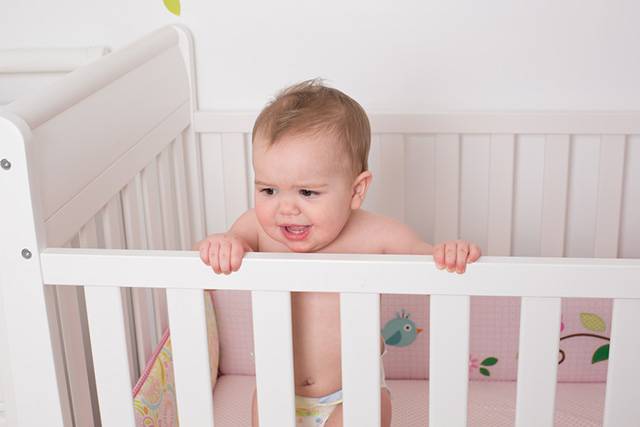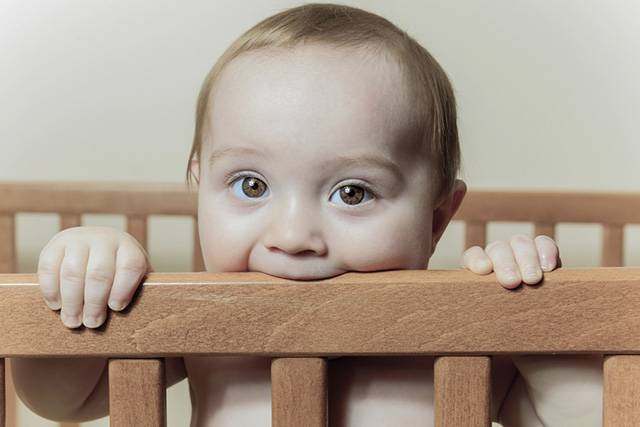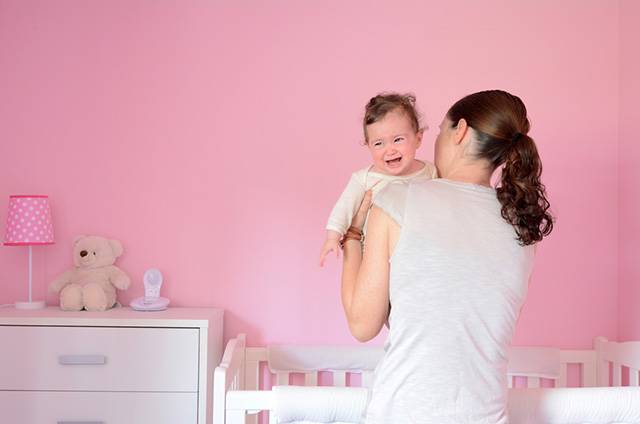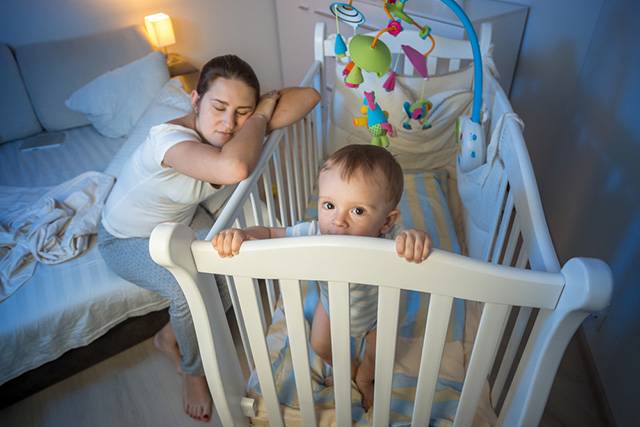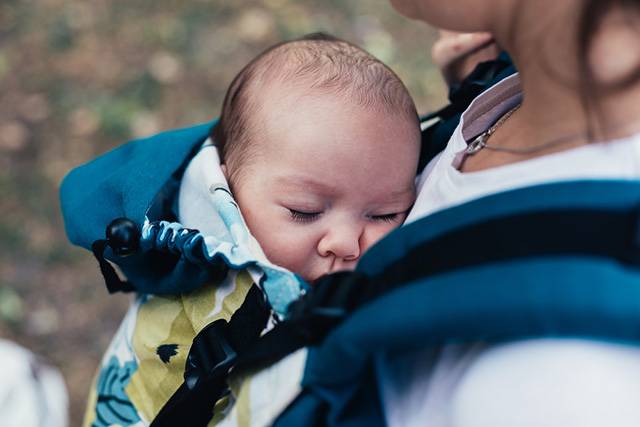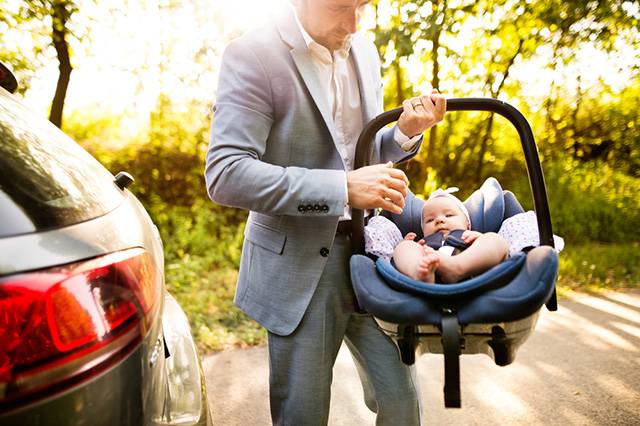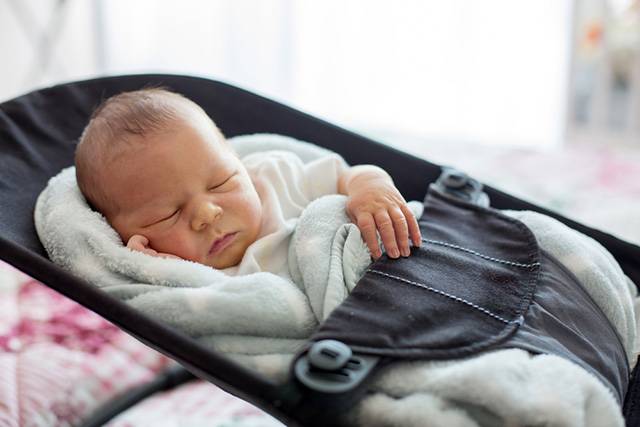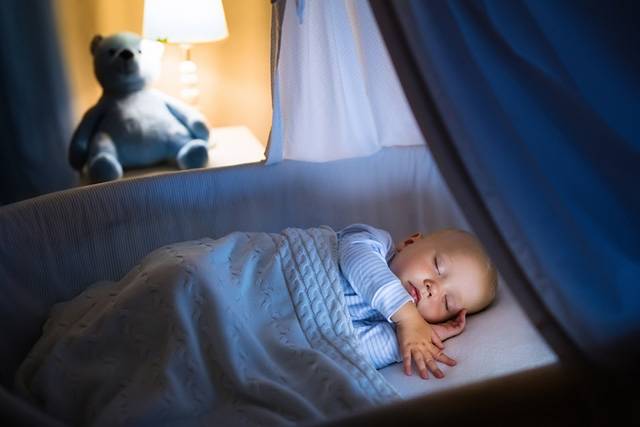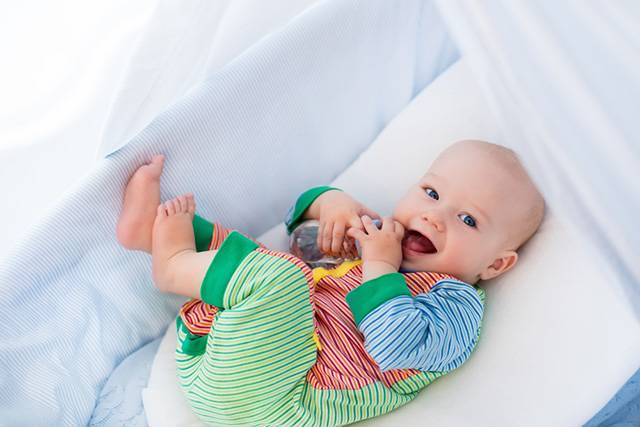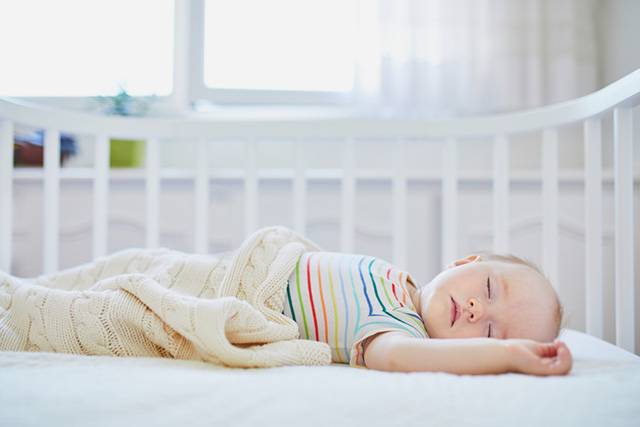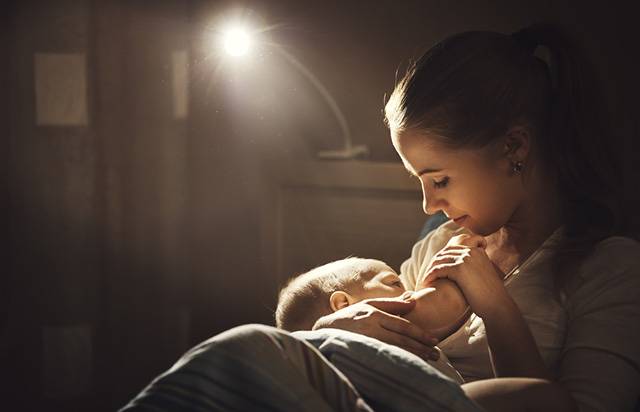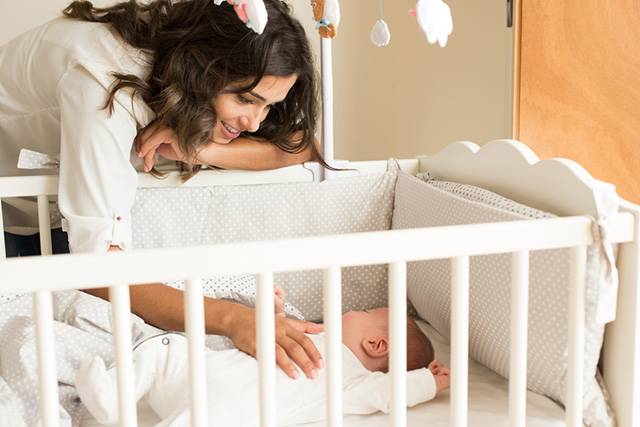Once you get your newborn home, it may feel like you never want to put them down. Watching them fall asleep in your arms, while they feed, or checking on them while they doze in a swing or bouncer as you keep them close quickly becomes an acceptable norm. And for good reason.
But if your baby is struggling to sleep in their crib, or jolt awake each time you lay them down- it doesn’t take long until you begin to feel both exhausted and exasperated in your attempts to get a few hours of your own recharging sleep. Take a look at these tips and tricks to help get your baby to sleep in a crib.
Why Won’t Baby Sleep in Their Crib?
Whether this is an ongoing issue, or a brand new problem, the bottom line is- something has changed and your baby won’t sleep on their own. If your child is still a newborn, then you need to consider the fact they were just taken from a safe, warm, suspended environment, and the real world feels A LOT different.
No matter what the reason, it can result in a lot of uncomfortable scenarios- the worst being you begin to struggle with sleep deprivation due to your issues with getting your child to sleep. Regardless- it is frustrating and uncomfortable for everyone involved. But other things could be going on as well that you might want to consider to help influence a better rest for you both:
— Growing Pains
Your baby will grow quickly through the first year of their life, with major growth spurts arriving at regular intervals. This isn’t just physical growth, but mental as well as they become more and more aware of the world around them and discover their own part of it. This can result in discomfort and distraction, both things that can interrupt the natural sleep process.
— Teething
Every child will have a different teething experience, but it isn’t usually a comfortable one. It can also be hard to determine if your child is teething when they first begin to feel discomfort, and may showcase as a low grade fever, or even upset stomach. There are steps you can take to help alleviate this pain to continue with any bedtime schedule you are trying to incorporate.
— Illness
If your baby is sick, experiencing a bout of colic, teething, or has some hidden aches and pains from growing- they might struggle to get comfortable and simply want to be held. This can be exhausting for both parents and children. Be sure to take steps to alleviate these issues and get doctors assistance when required so you can work on sleeping in a crib independently.
— Changes in Sleep Routine
Disruptions in a sleep routine, an unusually long day time nap, or natural changes can offset when a child falls asleep, how long they sleep and create havoc for a day or two until a new routine is established. Being proactive can help speed this process up.
Common Comfort Areas for Your Child
If your baby falls to sleep easily anywhere but in their crib, you may want to try and mimic the comfort they are experiencing there to make the transition an easy one. First, let’s take a look at where your child falls asleep easily, and explain why that might be the reality.
You may want to read: Best Baby Books
• Falls Asleep in Your Arms
Infants are very sensory, and also have a good sense of smell. Being held mimics the womb and warmth they experience. It is comforting and compressive, and the transition from your arms to the crib can be drastic in what they experience. First, their limbs are no longer being held close to their body, and second, you remove a major source of body warmth.
• Falls Asleep in an Infant Carrier
An infant carrier is similar to being held in the arms, but even more compressive. It mimics a swaddling effect and is about as close as your child can get to you outside of the womb- especially if you practice skin to skin contact. Removal from an infant carrier is quite a drastic change. Plus, the upright position can help with reflux.
• Falls Asleep in the Car Seat
A car seat holds your child securely, and also helps retain warmth. Using a car seat generally includes movement as well, creating a comfortable, rhythmic motion that is soothing. Even though it is dangerous to allow your child to continue sleeping in their car seat once you arrive at your destination, many parents still do this.
• Falls Asleep in the Baby Swing
The baby swing is similar to the car seat. It holds a child securely and involves soothing movement. Many also include sound or lighting that is stimulating and helps draw their attention away from their discomfort from not being held.
You may be interested in: Why Do Babies Smile in Their Sleep?
Steps to Help Your Baby Sleep in a Crib
First and foremost, you want to consider the sleeping environment and schedule you are keeping. This consistency is important for helping your child relax and begin to be more independent in falling asleep comfortably. Once you have that under control, you can address the observations you’ve noted surrounding where and how your child sleeps best.
Step One: Keep a Schedule
It is very important to keep to a nighttime sleep schedule. Nap schedules may alter as your child grows and they need less sleep, but make sure to begin to wind down and lay your child down to sleep at approximately that same time every day. With time, even your baby will recognize the schedule and be influenced to relax and sleep.
Step Two: Control Temperature, Lighting, and Sound
Along with a consistent sleep schedule, you want to keep a consistent sleep environment as well. A cooler temperature, low lighting, and sound should be the same from one day to the next. Sound machines help cover up disruptive noises that can wake a sleeping child, and help create a soothing experience.
Step Three: Consider Swaddling or Clothing Choices
Too many clothes, or heavy clothing can be hot and uncomfortable. Swaddling might also be too much as your child grows and creates the opposite of what you want to achieve- a feeling of security if your baby likes to stretch. However, it might be the answer you need when your child likes to fall asleep in your arms or infant carrier.
Step Four: Include A Personal Item for Smell
Babies recognize their mother’s smell, and may need the comfort of her closeness to relax. Consider washing your baby’s sheets with her clothing, or even using it with your own bed to help with the personal scent. You can also place a personal clothing item near the bed where your baby will smell it.
Step Five: Keep a Feeding Schedule
Just as important as a sleep schedule is theirs. Many babies fall asleep while eating and you can use this to your advantage. If your child depends on a nighttime feeding, keep to this schedule to help them stay comforted due to a full belly and the closeness feedings require.
Step Six: Mimic Your Baby’s Comfort Environment
This is when you need to take into account what naturally influences your baby’s relaxation. Whether it is being held, going on a car ride, or swinging- you can influence and mimic some of the same things that might comfort your child.
Being Held
Transitioning from your arms to the crib is drastic in its change in temperature and overall feel. For infants, swaddle them, and for older babies, use a sleep sack to help retain the heat from your body, and help them keep their extremities close to their body.
Infant Carrier
As with being held, you can use a swaddle or sleep sack to replace the infant carrier, and take advantage of feeding while being held before placing baby in the crib. With luck, your child may have already fallen asleep, but will most likely already be relaxed and comforted enough to fall asleep after being laid down.
Car Seat
Since movement is part of what is comforting about the car seat, consider using a vibration mattress pad to help create a soothing feel that mimics movement. You can use one in conjunction with a swaddle or sleep sack.
Swing
Swinging is also linked to a rhythmic and comforting movement that lulls a child to sleep. There also is usually a sound associated with this, so you can take advantage of vibration sleep pads, noise machines, and even swaddling. Also consider using a projective night light if you use one with the swing.
Conclusion
Transitioning your child to a crib can be uncomfortable at first, but with some preparation and insight to your baby’s behavior- you can help make this transition as painless as possible. It’s important to keep to a regular schedule, recognize what comfort aids help your baby, and be consistent in your own actions to avoid disrupting the end goal: getting your child to sleep independently in their own crib.
Photo credit: antoniodiaz/Shutterstock; Alexandralaw1977/Shutterstock;
Lopolo/Shutterstock; ChameleonsEye/Shutterstock; kryzhov/Shutterstock;
Nataliya Sdobnikova/Shutterstock; Halfpoint/Shutterstock;
Robert Petrovic/Shutterstock; Mila Davidovic/Shutterstock;
FamVeld/Shutterstock; Ekaterina Pokrovsky/Shutterstock;
Evgeny Atamanenko/Shutterstock; Trendsetter Images/Shutterstock

